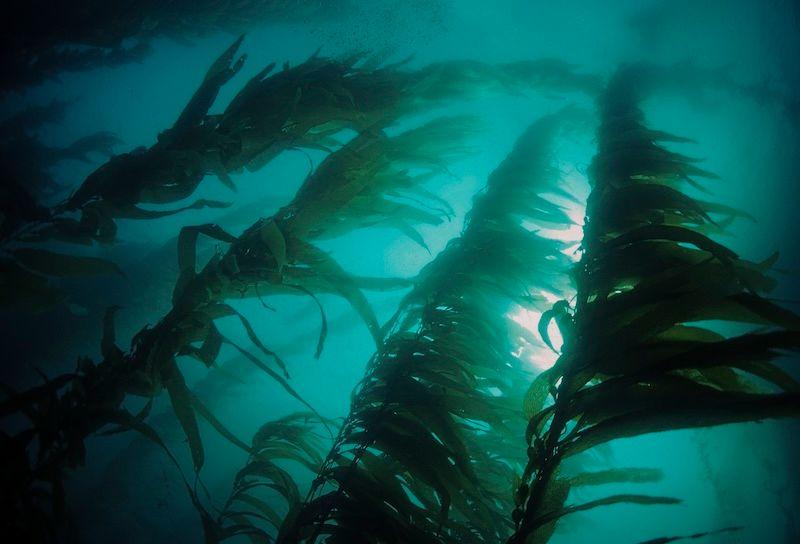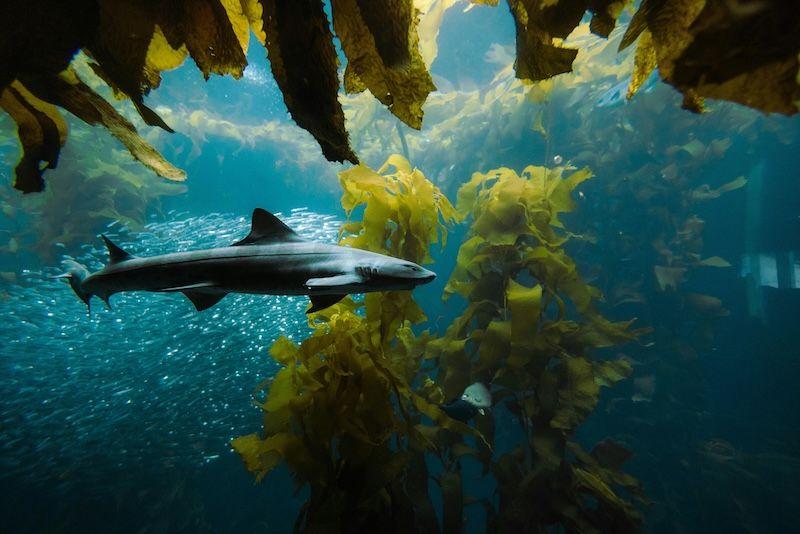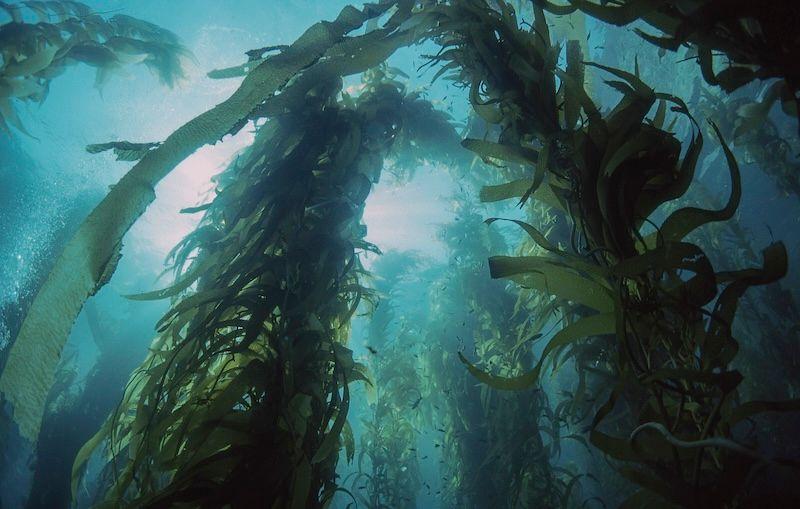Every year, seaweed covers China's Yellow Sea. A large green mantle extends over the water and sand to reach between 10 and 30 square kilometers. The phenomenon has become an attraction for its residents who, accustomed to the massive growth of algae from nearby crops, come to swim or take pictures.
China is the world's leading producer of cultivated seaweed, but it also imports from other countries such as Chile and Peru. Its production is important for the food industry as a basis for traditional cuisine in Asian countries, but its use extends to other sectors in the rest of the world.
Algae are important in agriculture for obtaining fertilizers; in the pharmaceutical and cosmetic industry for shampoos, soaps, shaving creams, toothpastes, toners, foams, and others; and even in the energy sector, where they are beginning to be promoted as biofuel.
Over the last decade, the seaweed market has spread across Europe and Asia, with a view to growing also in America, where hundreds of companies join in cultivating, submerging, harvesting and transforming tons of these organisms.
The industry has received the support of several civil organizations, government institutions and even specialists in science. They see a possibility of “reforesting” marine macroalgae forests that are lost due to climate change and human exploitation, while exploiting their capacity to capture carbon and contribute to the reduction of CO2 (carbon dioxide) emissions.
However, the algae plagues that reach the shores of China have also made it possible to study the other side of the green revolution. More and more research on the effects of industrial overproduction is pointing to damage to the ocean. Evidence that reforesting the sea is no more harmful than beneficial.

Seaweed from the bottom of the sea. Photo: Jack Drafahl/Pixabay.
A study of the industry
From the bottom of the sea, macroalgae forests simulate the shape of cathedrals. On average, they reach up to 30 meters in height in search of the sun's rays and there are more than 11,000 different species. The best known are kelp, sargassum, rock algae, dulse and marine tangle.
They are commonly distinguished by their reddish, brown and green colors. And although they exist in freshwater, studies on industrial monoculture focus on those in the sea, where it is estimated that they can reach areas comparable to the forests and jungles we know on Earth.
With the signing of the Paris Agreement on Climate Change in 2015, a possibility for a new carbon market opened up by establishing voluntary cooperation to achieve greenhouse gas (GHG) reduction objectives.
Carbon markets are commercial systems for buying and selling credits. It means that companies or individuals can buy the right for their GHG emissions and pay for generation. What at first glance might seem like a useful measure to compensate for pollution.
However, in the study “The Mirage of Algae. Industrial cultivation does not cool the climate and harms nature”, prepared by the international organization Action Group on Erosion, Technology and Concentration (ETC Group), the risks following the massification of these monocultures are analyzed through five myths.
The first is that seaweed isn't just carbon sinks that they can hold onto without any consequences.
“All living systems breathe, that is, we absorb oxygen and emit carbon dioxide. Even forests absorb and emit carbon dioxide... So it's a really speculative operation to say that a living system will retain carbon (completely), that it will suddenly stop everything it absorbed and will keep it,” said Silvia Ribeiro, director for Latin America at ETC Group.
The study builds on other research to confirm these myths. For example, the one developed by John Barry Gallagher, Victor Shelamoff and Cayne Layton, in which it is considered that although algae can capture CO2, ecosystems are net producers of these emissions.
The second myth about industrial monoculture is that scaling up algae production is beneficial to marine ecosystems. According to the ETC Group study, excessive production has an impact on coastal habitats, since covering the seas, as in the Yellow Sea of China, prevents the passage of light to the seabed and increases the risks of suffocating biological communities that are also indispensable for life.
Other impacts include changes in water movements, the diversion of nutrients that harm corals, an increase in methane and dissolved carbon, pollution, loss of genetic diversity and pests.
“If the ecosystem was degraded or impoverished and there is a restoration, it's good. But not at the level they are saying (the industries), that they are talking about hundreds, thousands, of hectares of seaweed plantations,” Ribeiro said.
As a third myth, it is mentioned that algae are fast biomass, since their growth depends on the species and the conditions in which it is found; the fourth myth is that there is plenty of ocean, when in reality there is already occupation by activities and ocean planning is required to understand in which regions it is feasible to cultivate; finally, the study positions as a fifth myth that industrialization is good for coastal communities.
On this last point, the ETC Group study cites a manifesto from Seaweed Commons, an international network of small-scale growers, scientists and algae advocates, who take a stand against the industry in the face of environmental risks and are committed to artisanal crops that include communities. They also advocate for more studies on industrialization.

Marine forests. Photo: Isaac Mijangos/Pexels.
Best for algae
In Mexico, most of the production that is made for raw materials is destined for export, as in other Latin American countries that ship to Asia. José Zertuche, emeritus researcher at the Autonomous University of Baja California, agrees that within the monoculture industry there are myths about the benefits of massive seeding.
“It's not easy to show that algae at the end of this (mass cultivation) process actually sequester carbon. If you grow algae for industrial use, the carbon returns to the atmosphere,” Zertuche explained.
According to the researcher, encouraging industries to take advantage of macroalgae should focus on derived products having a lower environmental impact. For example, producing seaweed-based foods that are more sustainable than those generated by traditional agriculture.
“You have to think that the ecosystem, and almost everything in life, develops in flows and the ecosystem has a certain capacity to incorporate them without causing harm. It becomes a problem when those capacities are exceeded,” he said.
In Mexico, there are small-scale projects such as the reforestation of kelp forests in Ensenada, Baja California, where fishing communities and biologists are working on a reforestation project to combat the purple hedgehog plague; or in Dzilam de Bravo, Yucatán, where fishermen are trained to cultivate and improve the economy.
The need to reforest stems from the effects of the climate crisis, such as the increase in temperatures in the seas. A problem that is not exclusive to Mexico and could change the motivations behind industrial cultivation to shift towards production more in line with the environment.
“It depends on the scale. Indeed, there is no magic solution, but what we have to do is replace our typical activities with more user-friendly techniques and processes. And on the other hand, a very important issue is the reduction of consumption,” he concluded.



Comentarios (0)